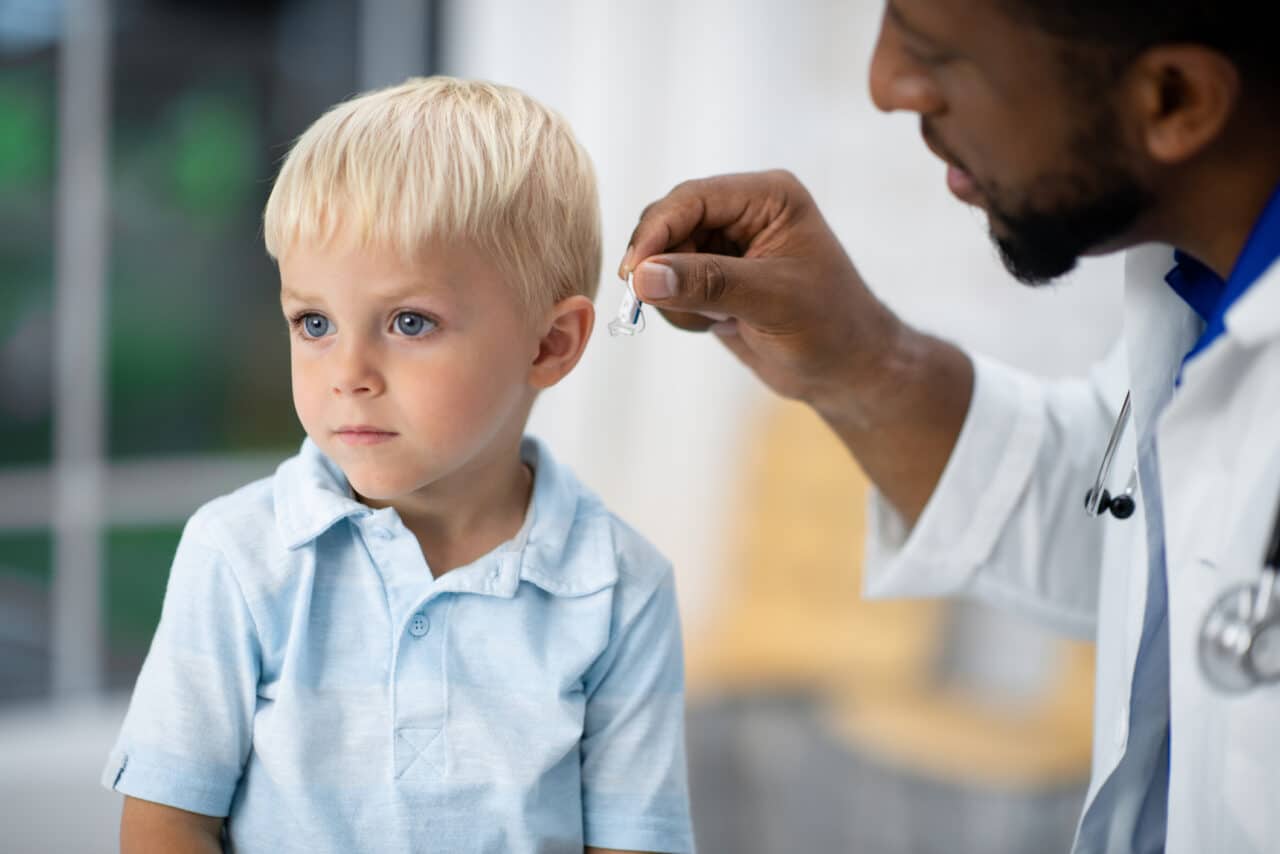Every parent has many responsibilities when it comes to caring for their child. For parents of children with hearing loss, one of these responsibilities is ensuring their hearing aids are working properly. We review some basics of hearing aid care, how to perform listening checks and some troubleshooting tips below.
Basics of Hearing Aid Care

Some basics of hearing aid care include:
- Keeping the hearing aids away from moisture. While many hearing aids are water-resistant, none are waterproof. Make sure your child takes out their hearing aids before swimming at SLO Swim Center and showering, and be sure you don’t store their devices in humid places like the bathroom.
- Putting them in a dehumidifier at night, especially if they were exposed to rain, sweat or other forms of moisture during the day.
- Opening the battery doors at night to allow moisture to evaporate and to maximize the battery life.
- Having spare batteries on hand in case the power in your child’s devices dies in the middle of the day.
- Removing the hearing aids before applying sprays like sunscreen, insect repellent and hairspray.
- Keeping the hearing aids away from pets and small children.
How to Perform Daily Listening Checks
To ensure your child’s hearing aids are working before sending them off to school, perform a listening check by:
- Checking the battery using a battery tester. Touch the positive end of the battery to the positive point on the tester, then touch the negative end of the battery to the negative end of the tester. The tester will indicate whether or not the battery should be replaced.
- Checking the sound using a listening scope. Place the earmold into the bell end and the other end in your ear. Listen to the sounds around you, then say aloud the Ling Six Sounds (ah, ee, oo, mm, sh, ss). The sounds should be clear.
Troubleshooting Tips
If your child’s hearing aids do not pass the listening check, you should:
- Make sure the battery door is closed all the way
- Check the battery compartment for dirt or damage
- Check the earmold and tubing for blockages, tears and moisture
- Check the ear hook for damage
- Change the battery
For more information or to schedule an appointment, call M.K. Larson Audiology today.